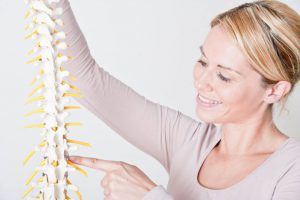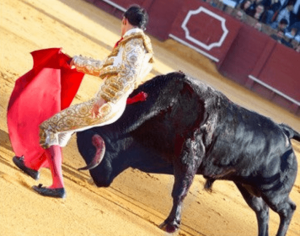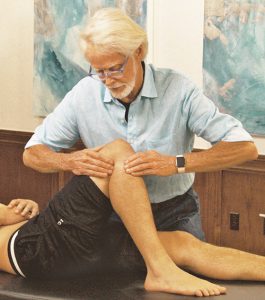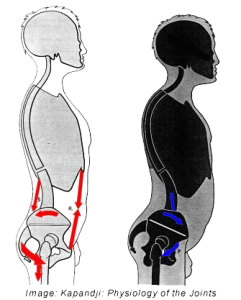
An injury, repetitive movements, obesity, weak posture, and aging articular cartilage may change the way the Z-joints align and move on one another. Trauma combined with prolonged gravitational exposure causes thinning of the joint capsule, cartilage degradation, and accompanying bone spurs. Similar to knee arthritis, these changes make it difficult for the joint to move fluidly, which often triggers an inflammatory response. With chemically sensitized medial branch sensory nerves bombarding the spinal cord and brain with danger signals, the back stiffens and may hurt during certain movements.
Acute episodes of lumbar Z-joint pain are typically intermittent, generally unpredictable, and occur a few times per month or per year. Although standing may be somewhat limited, sitting seems to be the most provocative position. In acute cases, Z-joint symptoms typically localize to one side of the back adjacent to the spine. In chronic cases, diffuse pain may spread into the buttock, groin, or down the entire limb.
Z-joint Pain Provocation Tests
In Image 2., I begin the assessment by gently palpating the paravertebral tissues overlying the lumbar transverse processes.
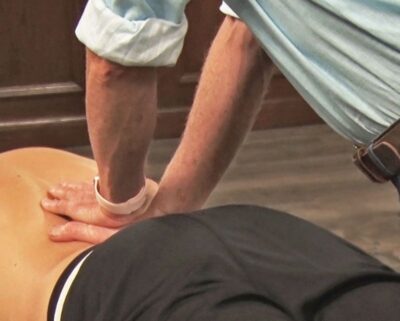
The Z-joints themselves are not manually palpable, but this maneuver is helpful in localizing and reproducing any point tenderness, which commonly accompanies Z-joint mediated pain. If the client reports localized unilateral tenderness, there are several confirmation exams I’ve found helpful, especially the Sphinx Hyperextension Test and Kemp’s Test (Images 3 and 4).


In the Kemp’s Test, backward bending, rotation, and sidebending toward the affected side may elicit Z-joint symptoms. However, it’s important to note that this pain provocation test may also implicate nerve root compression and sciatica symptoms. Sharp buttock and leg pain following a dermatomal pattern may suggest sciatica, whereas Z-joint irritation is suspected if the test reproduces the client’s localized low back pain. If unsure, several other tests, such as the Slump Test and Straight Leg Raise Test, should be clustered to confirm your findings.
Restoring Z-joint Mobility
Numerous studies have examined conservative care for people with low back pain, but I’m unaware of any published investigations that have targeted Z-joint pain specifically. Nevertheless, most experts agree that the general principles of conservative treatment for nonspecific low back pain can be applied to Z-joint pain, too.1
I’ve had reasonable success treating both acute and chronic cases of Z-joint pain using the Myoskeletal Alignment Techniques (MAT) demonstrated in Images 5 and 6. These graded exposure stretching maneuvers are designed to bring balance to musculofascial tissues that torsion the pelvic bowl and create excessive anterior pelvic tilt. When performing these dynamic postural stretching routines, it’s best to address all connective tissues that articulate with the lumbar spine, hips, and legs and may be creating abnormal compressive loading through arthritic Z-joints.
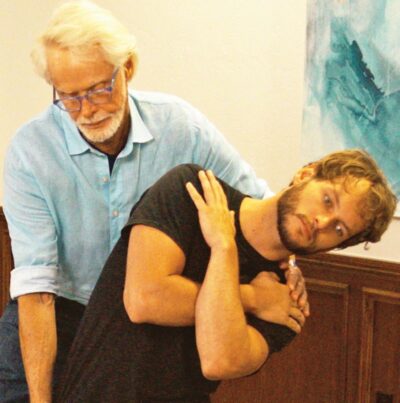
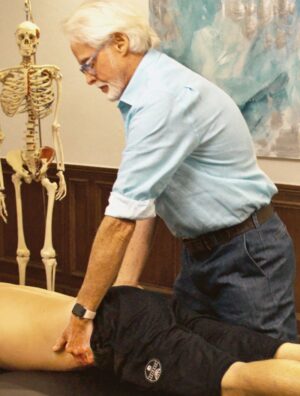
In short, MAT treatment goals for Z-joint pain include:
- educating the client by explaining their pain in a reassuring manner that avoids catastrophizing.
- reducing excessive lumbar lordosis.
- restoring lumbar spine mobility, pelvic alignment, and pain-free movement.
- providing (playful) self-care advice to strengthen and stabilize the lumbopelvis.
Summary
During each therapy session, feel free to offer advice about various sitting and standing postures that may help relieve compressive stress through the Z-joints. Cueing the client about faulty movement patterns helps bring the brain’s attention to protectively guarded areas. All our movements are governed by the central nervous system, so the brain will limit flexibility, range of motion, and mobility if it feels there is a potential danger. Therefore, it’s important to always maintain good communication with our clients and keep them actively engaged in the therapy process. While Z-joint arthritis can’t be dramatically reversed, I’ve found that exercise, lifestyle changes, and proper bodywork can contribute to a better quality of life and less discomfort.
References
1. Binder, D., & Nampiaparampil, D. (2009). The provocative lumbar facet joint. Current Reviews in Musculoskeletal Medicine, 2(1), 15-24.
On sale this week only!
Save 25% off the Posture Pain Performance course!

NEW! USB version with enhanced video
Discover the foundational principles behind MAT technique as we take you on an in-depth look at the connection between pain, posture and function. Save 25% off the Posture Pain Performance course this week only. Offer expires Monday April 22nd. Click the button below for more information and to purchase the course. Upon completion receive 20CE hours and a certificate of completion to display in your office.
Bonus: Order the Home Study version and receive the e-Course for FREE!




